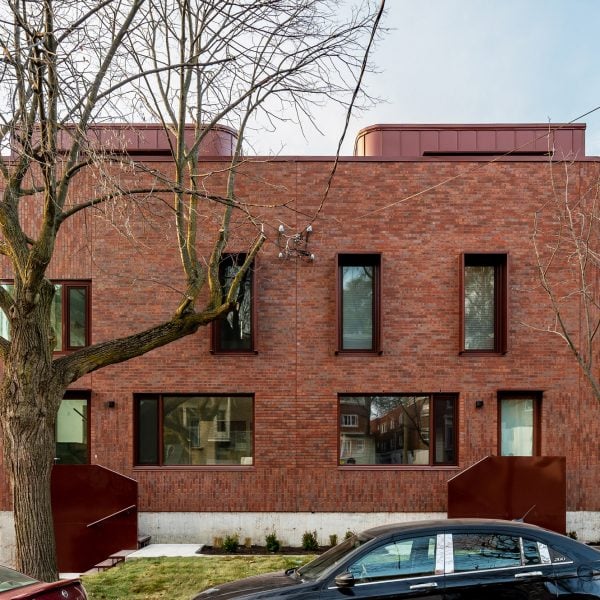Local studio Naturehumaine has completed a two-family housing block located in the Côte-des-Neiges borough of Montreal that draws on 1930s architectural styles.
The project comprises 297 square metres of housing on a narrow urban strip, which formerly served as a large swimming pool site for a neighbouring building.
Called Le Paquebot – or The Steamer– the project references and builds on the architectural styles of the surrounding neighbourhood, which is made up of 1950s multi-residential buildings that surround the project on three sides.
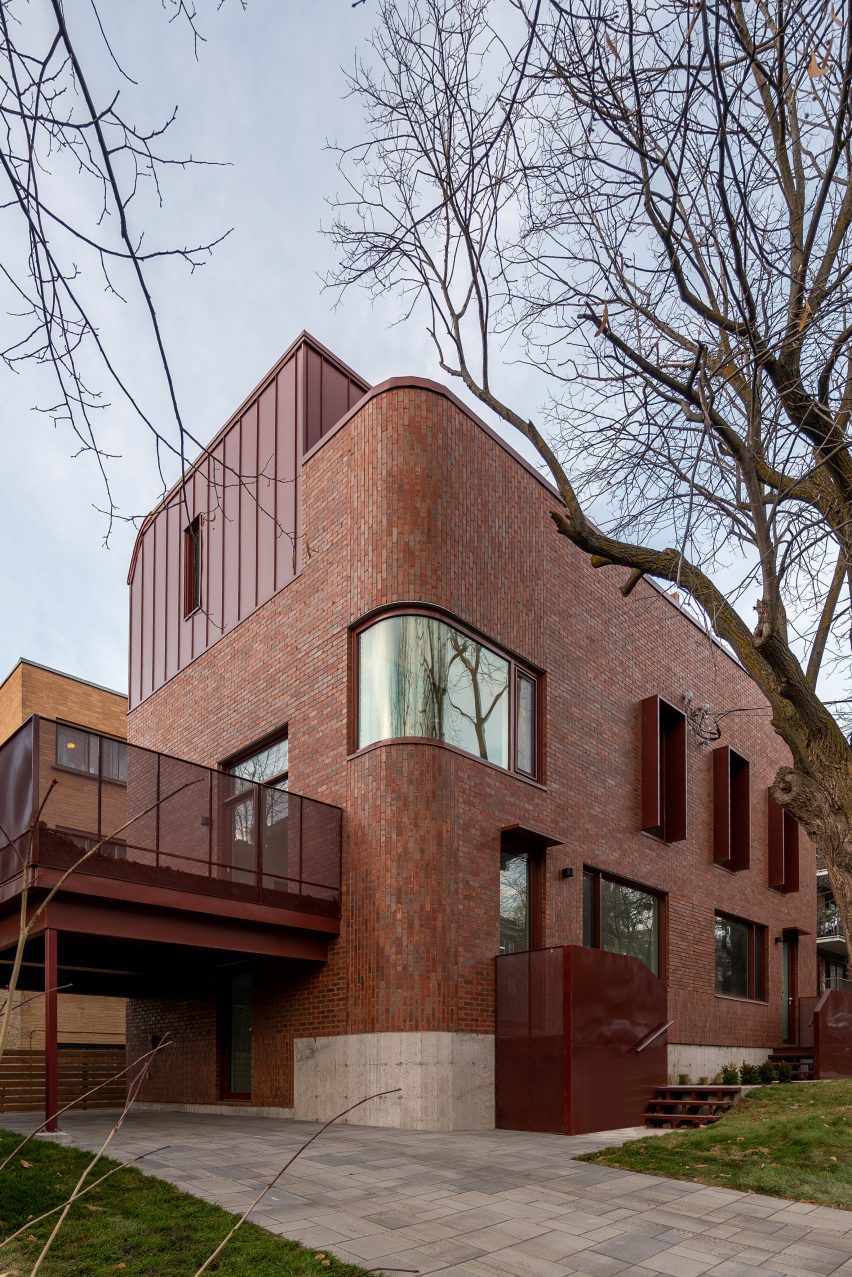
It includes two semi-detached duplex units spread over four floors with outdoor space on the rooftop and at the sides.
Round corners, various masonry configurations, strict symmetrical layouts and refined geometries characterise the structure.
Its form was influenced by the Streamline Moderne architectural style, commonly associated with the 1930s interwar art deco movement.
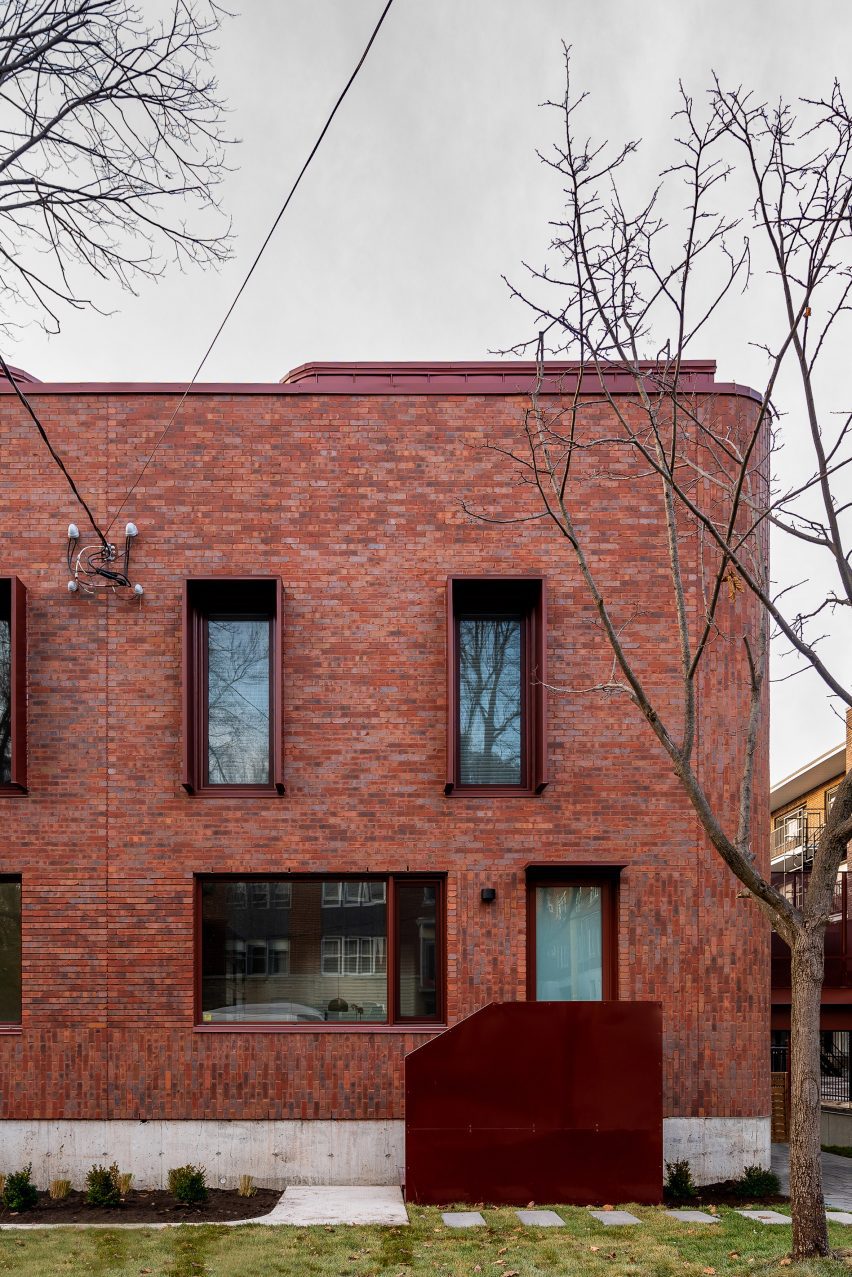
“Since we found in the immediate neighbourhood various beautiful examples of art deco residential projects from the 1930s, it became obvious for us from the start that we wanted to revive in a contemporary way some of the features of that period in architecture,” Naturehumaine told Dezeen.
The facade is clad in red clay brick with steel details that have been painted wine red.
Privacy screens as well as the terrace railings were made from perforated steel painted in a terracotta colour, along with the curved roofs of the mezzanine floors.
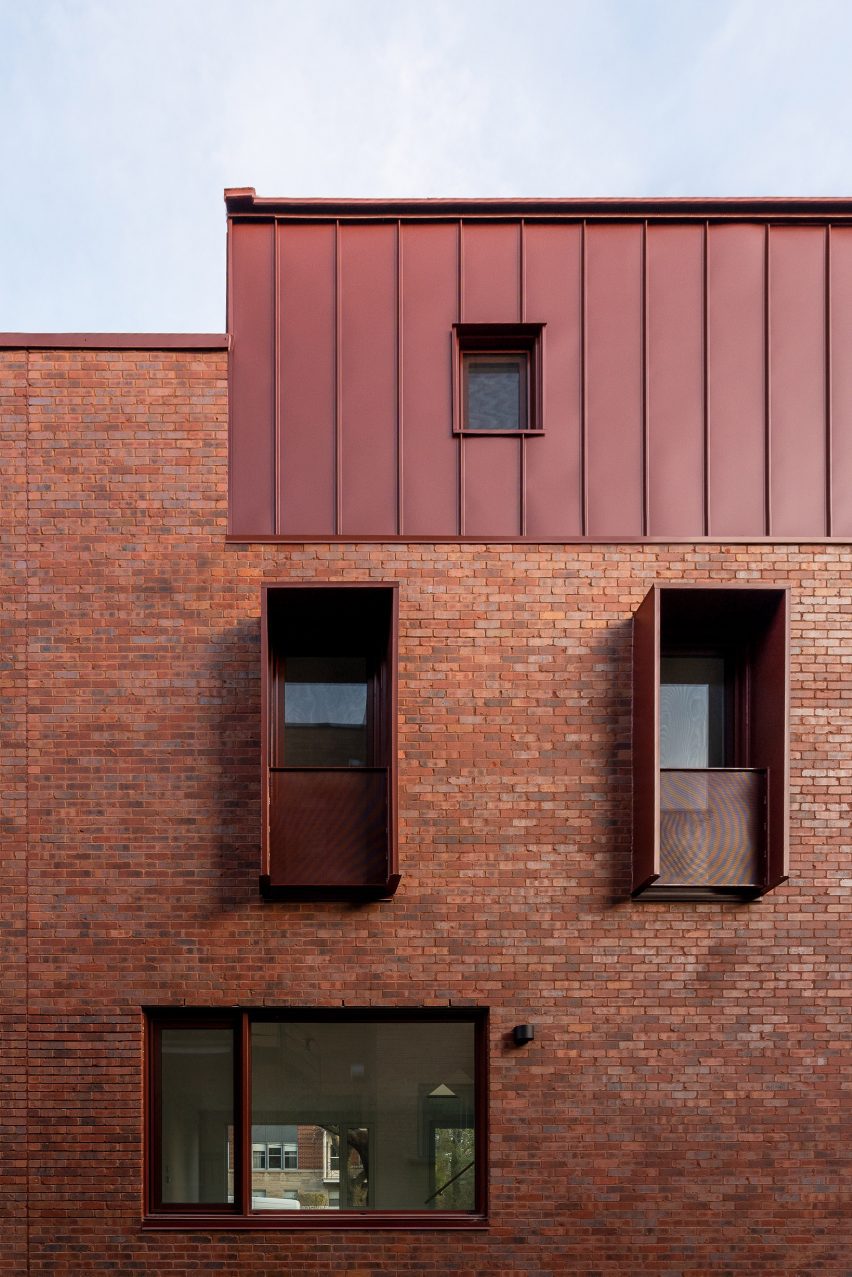
“Our first intention was to choose a burgundy colour that would contrast and stand out with respect to the immediate neighbours where both are in tones of light and darker brown,” Naturehumaine told Dezeen.
“What turned out to be interesting is the variation perceived in the tonality of the brick based on lighting; the brick becomes particularly warm and orangey when directly exposed to the sun.”
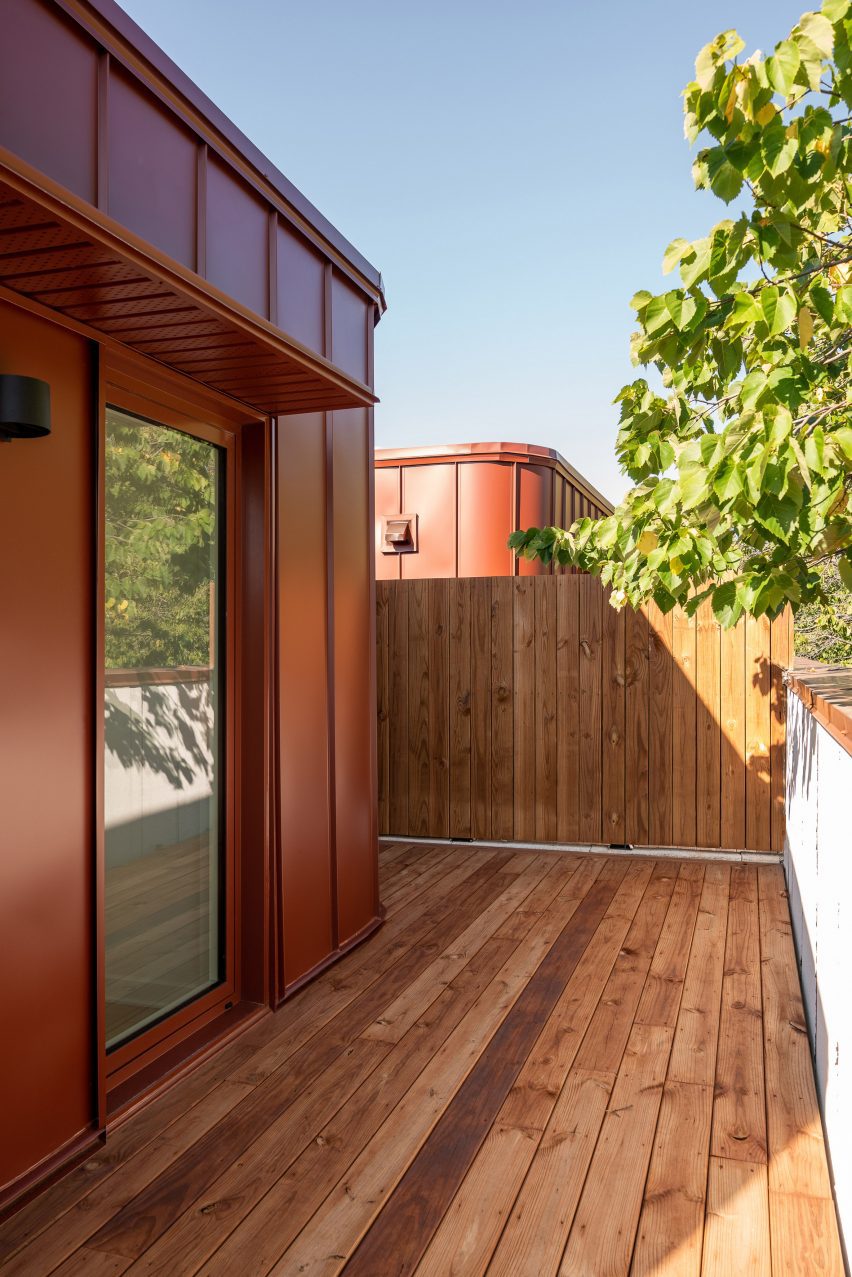
The homes are set up symmetrically, with four bedrooms each. There are semi-submerged basements that hold single bedrooms and a family room, while the ground floor holds the common areas.
The third floor is dedicated to two bedrooms meant for children, while the top floor, which acts as a mezzanine, holds the primary bedroom.
A central staircase bisects each of the homes and each has a carport topped by a terrace that extends from the ground floor
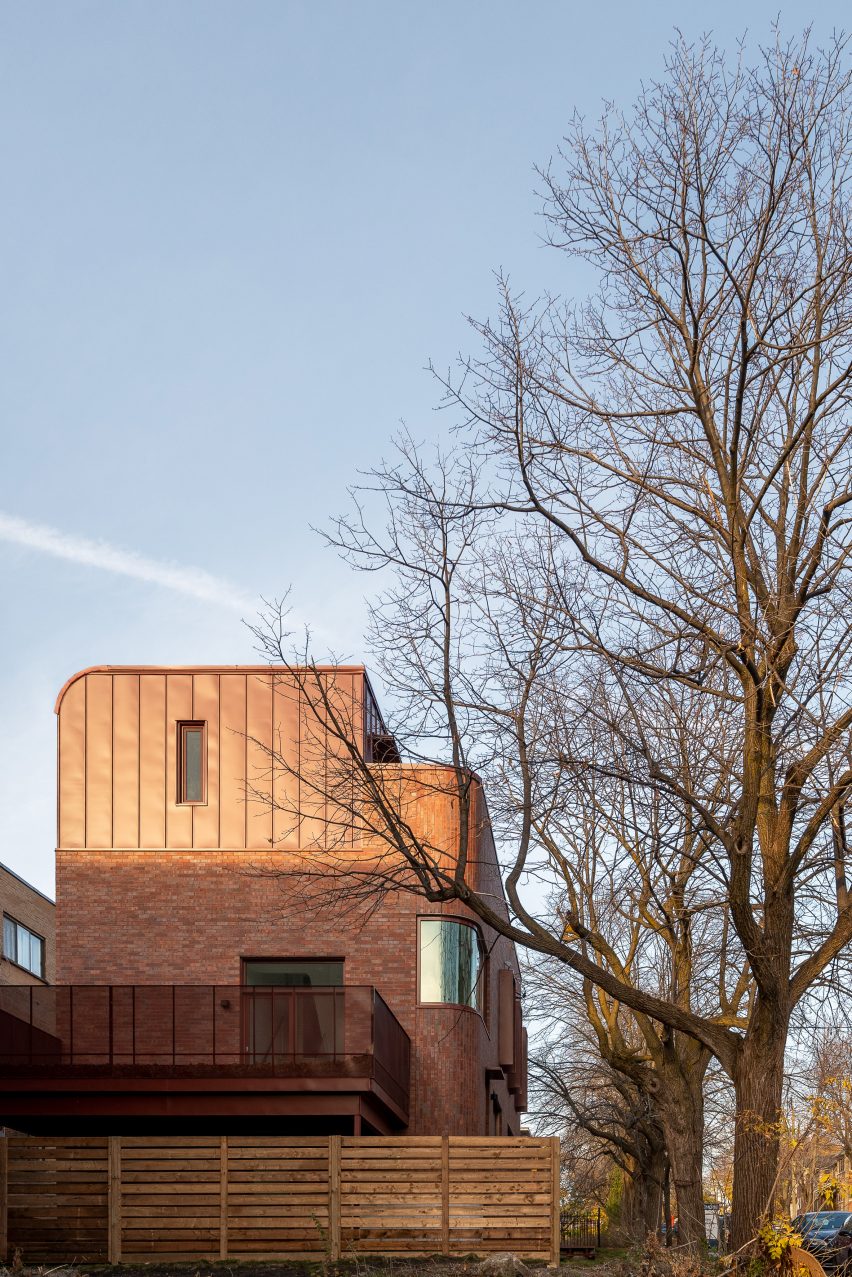
The ornate masonry work exists in its usual horizontal layout until coming to head at the curved windows, where it has been turned vertically and tilted toward the two front corners of the home in order to accentuate the curve.
The corner masonry comes to a halt at large, curved-corner windows.
Because the large window needed double-glazing and used curved glass, the windows had to be fabricated by specialists in Texas and then shipped north to the site in Montreal.
“For a modest residential project like ours, it was effectively a challenge to build the rounded roofs and curved metal lintel needed to support the brickwork above our rounded corner window.
“All of these elements needed to be perfectly erected one above the other on the same radius,” said the studio.
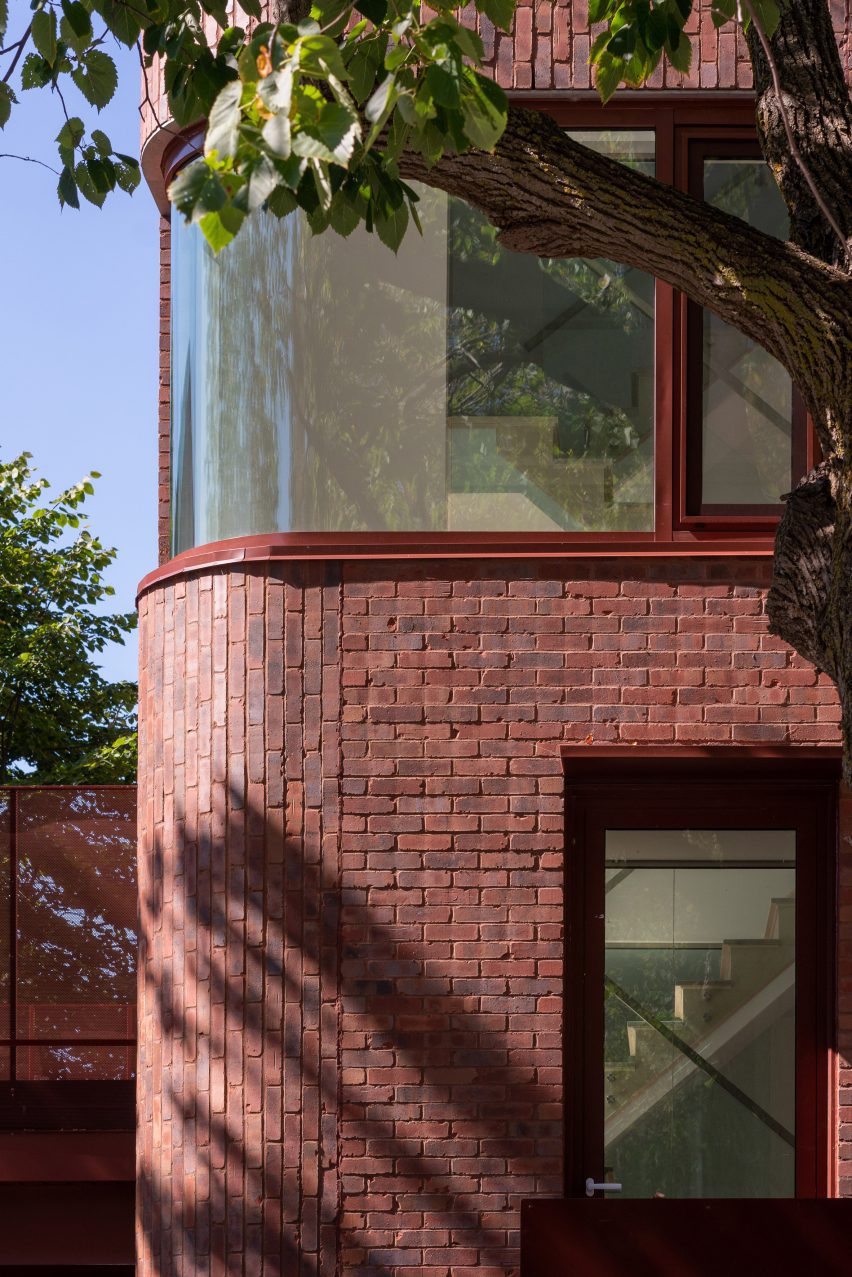
Nonetheless, the strict geometric identity of the construction adds to the strong identity of the building. Curves and colours of the project aid in making this home a statement piece in the area.
Naturehumaine has completed other multi-family projects in the area such as a project with twisting yellow external staircases and single-family projects such as a home with a staircase inspired by Dutch artist MC Escher.
The photography is by Ronan Mézière.

